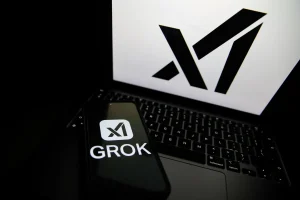Setting New Standards in Fact-Checking

In a bid to enhance how we ascertain the truth in the digital age, Brooke Hartley Moy and Ken Kocienda are launching Infactory. This new venture dives into the realm of artificial intelligence to verify information, marking a shift from their previous affiliations with Humane.
Infactory unveils as a specialized search engine focused solely on fact-cutting through the noise of the internet to provide precise, verified data. Its operation relies on AI to sort and present data, avoiding the pitfalls of misinterpreted AI outputs seen in other platforms. This targeted approach promises not only to streamline data verification but also to move beyond the general inaccuracies rampant on the web.
A New Frontier in AI and Fact-Checking
As the tech world continues to evolve at a rapid pace, a new player has entered the scene, aiming to transform the way we verify information. Emerging from the well-known tech firm Humane, Brooke Hartley Moy and Ken Kocienda are set to debut Infactory. This new venture is not just any startup; it’s focused on leveraging artificial intelligence for fact-checking, steering clear of the tumultuous hardware sector that has recently seen significant struggles.
The Innovation Behind Infactory
The concept behind Infactory is straightforward yet revolutionary. It serves as a search engine but with a unique twist—it specializes in factual data verification. This approach is distinct from other fact-checking mechanisms often embedded in broader search platforms like Google. By focusing solely on data accuracy, Infactory aims to provide clear, direct citations without the convolution of generative AI hallucinations prevalent in today’s digital landscape.
The founders’ strategy is clear: prioritize reliable data sources over sheer content volume. This selectiveness is particularly crucial in fields that demand stringent accuracy, such as finance and scientific research.
Strategic Decisions and AI Integration
Kocienda and Hartley Moy bring a wealth of experience and a clear vision to their new endeavor. Their approach to AI is calculated. While large language models (LLMs) will enhance user interaction with the system, ensuring that users can easily query the data they need, the core results remain unaltered by AI— a significant departure from current trends where AI sometimes distorts or oversimplifies information.
This careful integration of AI targets a major pain point in current search technologies— the often misleading simplifications offered by AI-driven summaries.
Market Strategy and Future Horizons
Infactory’s target market is notably distinct, focusing primarily on enterprise consumers such as newsrooms and research institutions. This is a strategic choice, reflecting the founders’ understanding of the market’s needs for accurate, reliable data.
The subscription-based revenue model they plan suits their business-to-business approach, setting Infactory apart in a landscape dominated by consumer-focused tech offerings.
As for the timeline, Hartley Moy indicated that Infactory’s launch is imminent, promising a new tool in the arsenal of professionals needing reliable data within months.
In conclusion, Infactory represents a bold step forward in the fact-checking arena. By focusing exclusively on delivering precise, AI-enhanced data verification, Infactory is poised to become an essential tool for entities requiring factual accuracy, such as newsrooms and research institutions. The anticipation for its launch underscores a significant interest in tools that streamline data accuracy and reliability. As Infactory prepares to roll out, the tech community watches closely, expecting it to set new standards in how data is verified in a digital world, potentially reshaping the landscape of information consumption.





